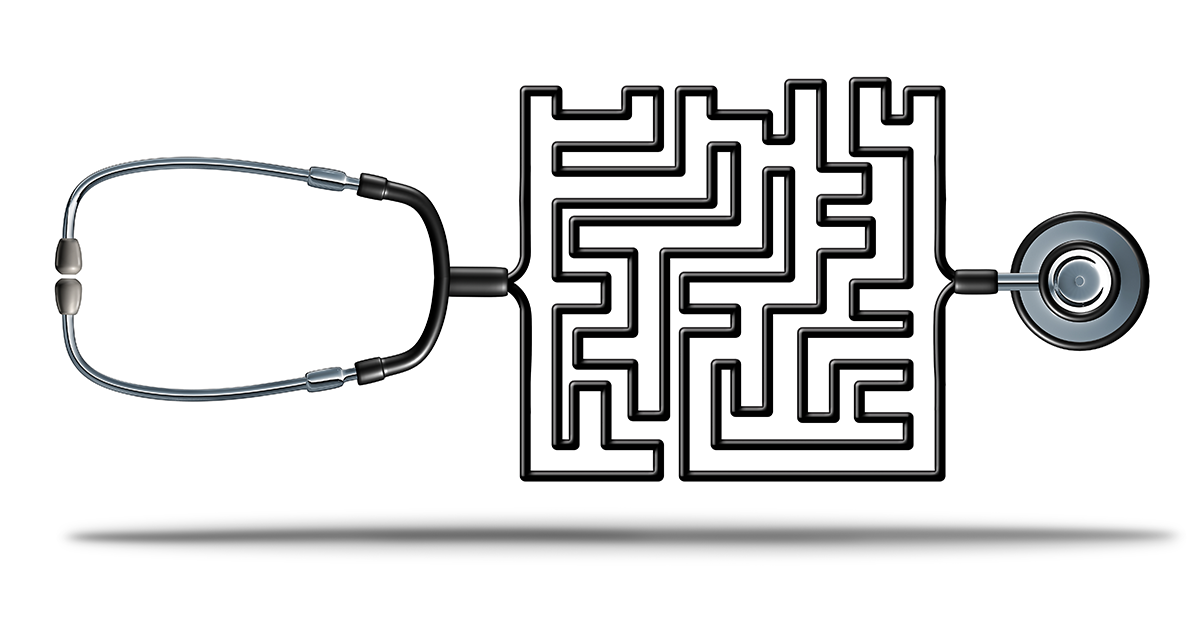
Even though the U.S. spends more than any other country on healthcare and its research, a study conducted in 2020 proved that only 7% of Americans are satisfied by their medical system.
What are the inefficiencies in the U.S. healthcare system that cause such distrust among the population?
Inequitable access
The biggest inefficiency in healthcare is the socioeconomic disparity in the population that receives the best assistance. Considering the decentralized form of healthcare that exists here, hospitals are allowed to design their budgets and policies, thereby alienating a large facet of the population via different limiting factors.
Financial constraints
Even though healthcare is a basic human right, the cost to afford this right has been rising for a long time now, making it a luxury for a significant portion of the population. This includes those living below the poverty line, undocumented people, and even the middle class now.
Procedures in the U.S. cost as much as 50% higher as compared to other first-world countries. The reason for these high prices is linked to administrative inefficiency in healthcare, which is discussed in this article.
The inaccessibility of an inefficient healthcare system lowers the percentage of consumers who seek preventative care, enhancing the country’s amenable mortality rates. Amenable mortality is death from easily preventable conditions such as obesity, hypertension, and even manageable conditions such as diabetes.
Since people do not seek this primary care, they are more likely to come back with something more serious, which further increases their financial difficulties. If one manages to go to a doctor in the first place, it becomes almost impossible for most people to keep up with the costs of medical supplies and medications.
Lack of insurance coverage
Given the high costs, most people do not pay out of pocket but rely on insurance whose disparity exposes other inefficiencies in healthcare. While millions of people lack insurance coverage, especially those undocumented, unemployed, and low-wage workers, those who do, struggle to pay the rising premiums on those policies. They are often forced to downgrade to insurance plans that barely cover anything. This limits the kind of care available to them, translating into a class inequality in the country.
Moreover, all states do not provide Medicaid and there are some hospitals and procedures that do not even accept it which is also a loophole in the healthcare space.
Geographical factor
Even though money is the biggest constraint, location is another limiting factor. Healthcare is not equally developed everywhere, especially in rural areas where only less complex services are available. Even if advanced services are available there, the quality is usually subpar, and this disparity is a concerning healthcare inefficiency in the U.S.Moreover, the lack of standardization is also one of the inefficiencies in the healthcare domain. Since a ‘fee for service’ model is adopted, hospitals have the liberty to charge whatever they want for certain procedures. Resultantly, similar procedures may be more expensive in one hospital than the other and your location, in cases of emergency, can cost you.
Availability of information
It has become increasingly hard to find a suitable doctor who best meets your needs because all that information is not easily accessible. While some renowned hospitals publish their doctors’ credentials on its website, that is not the case for all of them. The only metric available to patients before choosing a doctor is online reviews, which are not as reliable.
Administrative Inefficiency
Like any other organization, the administration of hospitals is responsible for everything and their inefficiency has been the root of multiple problems.
High administrative costs
Since insurance policies are not standardized, time and resources are wasted in coordinating with companies, coding, and generating relevant bills. These administrative costs are a crucial reason why healthcare prices are soaring.
Other administrative inefficiencies in healthcare that drive up costs include overspending on additional diagnostic tests for low-risk individuals, technology that isn’t required, and over-ordering supplies without checking inventory. Consequently, the U.S. is ranked first in the world in money spent on administrative costs.
Poor coordination
Hospitals are disorganized when it comes to coordination, both within that hospital and with other hospitals. Patient records are not always streamlined when they change primary care providers or hospitals and that is a huge inefficiency in healthcare. Many hospitals have still not shifted to the technological age, as heaps of paperwork create an additional barrier in their productive efficiency.
This poor recordkeeping has significantly increased during the COVID pandemic where the hospitals have struggled to effectively transcribe the virtual meetings between doctors and patients. This has led to outdated patient records and since the world will only increase its reliance on virtual meetings, it is time this healthcare inefficiency in the U.S. is addressed immediately.
Medical fraud
Since there is little to no oversight, it is fairly easy for administrations to get away with fraud and scams, the most common of which is upcoding. This involves charging insurance companies for a more expensive service than the one provided, which is illegal.
Other avenues of doing this include billing for patients that do not exist or have passed away, and overprescribing medication. More than 400 practitioners are charged each year for medical fraud, but the decentralized form of the system allows a lot of them to get away with it, which is one of the many critical inefficiencies in healthcare in the U.S.
Shortage of medical professionals
The COVID-19 pandemic is glaring evidence of the lack of doctors and nurses in the U.S., the shortage is ultimately increasing wait time and reducing the quality of care provided to patients. The American Association of Medical College projects a shortage of 54,100 doctors and 139,000 nurses by 2023 which is concerning, to say the least. On the other hand, the demand for healthcare is only bound to rise, given the rise in population every day.
This healthcare system inefficiency in the U.S. increases the burden on the existing healthcare professionals, forcing them to work overtime to make ends meet. Coupling that with the stressful nature of the job, this has negatively impacted their mental health, suicide rates are higher than ever.
Moreover, the additional responsibilities have also led to an increased number of preventable medical errors. It is now the third leading cause of death in the U.S., after cancer and heart disease.
See Also: Health Insurance Basics: The 101 Guide To Health Insurance
The bottom line
Inefficiencies in healthcare may be attributed to a number of factors, including errors on part of the doctors, staff, administrative loopholes as well as government policies and regulations. While some of these are major issues, it is never too late to address them, especially if they are actively trying to curtail the reach of healthcare to specific populations. While the healthcare inefficiency in the U.S. has been acknowledged by the President
Biden, only time will tell if the situation improves.









No comment yet, add your voice below!